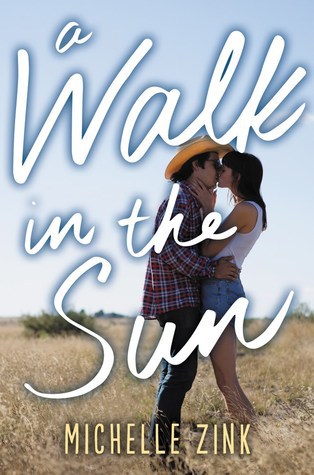Undercurrent is the story of newlyweds Katharine Hepburn and Robert Taylor. She’s recovering from being in danger of old maidhood–despite being raised by two scientists, she’s content just cleaning up after widower father Edmund Gwenn’s home laboratory. Taylor is a captain of industry; he created some invention to help win the war. It’s love at first sight, followed by a whirlwind courtship, with marriage then taking Hepburn (and the viewer) from undefined, but quaint and snowy small town life to Washington D.C.
There she meets Taylor’s powerful friends, gets a new wardrobe, and starts hearing about Taylor’s former business partner and now missing brother. Taylor can’t talk about him without flying into a rage. Everyone else seems to think he was a miracle over for sainthood. Hepburn finds herself with an invisible third in the marriage and decides to save her new marriage, she has to help Taylor resolve the internal conflict.
Only it just keeps getting more and more mysterious and Hepburn finds herself overwhelmed.
Director Minnelli handles the film without sensationalism. It’s good direction, with a lot of attention paid to composition for Hepburn and Taylor’s relationship as it progresses through the film, but it’s not sensational. Hepburn’s not obsessed with her investigation; obsession would give her too much personality. After the setup with Gwenn and Marjorie Mann (in a fun little part), Hepburn’s character is about her reactions to Taylor. And the film is all about the viewer’s reactions to Taylor (as Hepburn observes his behavior).
Edward Chodorov’s script could be a lot better. Long portions of the film skate by just on Hepburn and the supporting cast. Chodorov wants to tease, Minnelli wants to interest. It’s like Minnelli’s too patient, too confident in being earnest; Undercurrent needs a little zest to it. Hepburn’s obsession is never an obsession, for example. A lot of big reveals just come off too thin, like if Minnelli had done straight melodrama, it could be a big moment, except the script is thriller–and shallow thriller. It’s not like Taylor’s got a better part than Hepburn. Sure, he gets more dramatic moments, but they’re dramatically and narratively acceptable, not outstanding.
After a lackluster finish to the second act, the third one starts out like it’s going to bring Undercurrent up higher than one might think it could get. Then the finale fumbles; the film can’t deliver on its promises. Chodorov’s script just gives the actors nothing. It seems like Jayne Meadows is going to have a good scene, but then it fizzles out quickly, Hepburn literally rushing from the room. Because Chodorov.
Same goes for Robert Mitchum, who plays a caretaker who reluctantly gets involved. He’s got three scenes, with the film building him up more and more, then kind of fizzling out on him too.
Taylor gets through the film mostly clean. He’s mostly either being charming, suspicious, or charming and suspicious. And he and Hepburn are quite good together.
Hepburn makes it through the film, carrying it on her shoulders. She doesn’t even stumble when Chodorov’s script throws her a third act curve and no time to recover; she, Taylor, and Minnelli get Undercurrent done.
Oh, and Johannes Brahms. Brahms is essential in getting Undercurrent to the finish. The film uses a Brahms symphony as a plot point and Herbert Stothart uses it as a theme in his score to wonderful effect.
Karl Freund’s photography is fine. Though not foreboding at all. His best moments are actually the exterior sets; he shoots those beautifully. The interiors are fine, but kind of dull. And Ferris Webster’s editing is fine too. Though he chokes a bit on the action editing. He can cut the conversations, the romance, the suspecting, but he’s lost in the action scenes.
Solid support from Leigh Whipper and Clinton Sundberg in sort of too small parts. Undercurrent is overlong, but it has too small parts for its cast. Chodorov’s plotting is goofy.
Thank goodness for Hepburn, Taylor, and Minnelli.
 ★★½
★★½
CREDITS
Directed by Vincente Minnelli; screenplay by Edward Chodorov, based on a story by Thelma Strabel; director of photography, Karl Freund; edited by Ferris Webster; music by Herbert Stothart; produced by Pandro S. Berman; released by Metro-Goldwyn-Mayer.
Starring Katharine Hepburn (Ann Hamilton), Robert Taylor (Alan Garroway), Edmund Gwenn (Prof. ‘Dink’ Hamilton), Jayne Meadows (Sylvia Lea Burton), Leigh Whipper (George), Marjorie Main (Lucy), Clinton Sundberg (Mr. Warmsley), Dan Tobin (Prof. Joseph Bangs), and Robert Mitchum (Gordon).

THIS POST IS PART OF THE 'TILL DEATH US DO PART BLOGATHON HOSTED BY THERESA OF CINEMAVEN'S ESSAYS FROM THE COUCH.
RELATED
- OTHER FILMS DIRECTED BY VINCENTE MINNELLI
- OTHER 1946 RELEASES
- More





